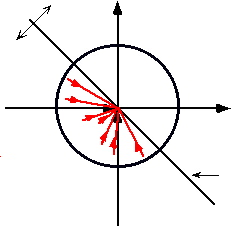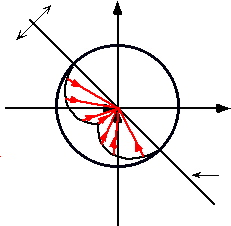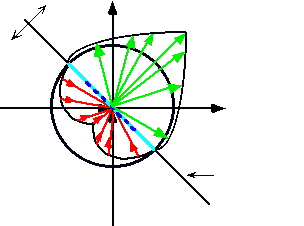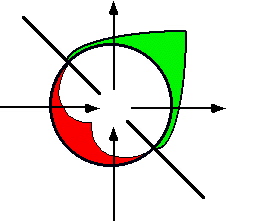

![]() Y
Y
(-,+)![]() (0, +)syntropy
(0, +)syntropy
![]() is shifted toward the (0, 0) ORIGIN.
is shifted toward the (0, 0) ORIGIN.

![]() Y
Y
(-,+)![]() (0, +)syntropy
(0, +)syntropy
![]() Chapter 5
Chapter 5
![]() TrustMark 2002 by Timothy Wilken
TrustMark 2002 by Timothy Wilken

![]() the X and Y axes.Below and to the left of the axis of atropy under just under the
the X and Y axes.Below and to the left of the axis of atropy under just under the
![]() perimeter of the zero-zero circle, we find the adversary loss. What Haskell called the
perimeter of the zero-zero circle, we find the adversary loss. What Haskell called the
![]() conflictor's deficit
conflictor's deficit![]() (-Z ).
(-Z ).

![]() Y
Y
(-,+)![]() (0, +)syntropy
(0, +)syntropy
![]() that represents the conflictor’s deficit
that represents the conflictor’s deficit![]() the
the
![]() Co-Action Cardioid.
Co-Action Cardioid.
Haskell's Periodic Coordinate System presents syntropic, atropic, and entropic process
![]() on a single model. Synergic co-Actions represent sytropic process. Neutral co-Actions
on a single model. Synergic co-Actions represent sytropic process. Neutral co-Actions
![]() represent atropic process, and Adversary co-Actions represent entropic process.
represent atropic process, and Adversary co-Actions represent entropic process.
![]() hyperbolic. He used Riemannian geometry to plot synergic co-Actions, Euclidean
hyperbolic. He used Riemannian geometry to plot synergic co-Actions, Euclidean
![]() geometry to plot neutral co-Actions, and Lobachevskian geometry to plot adversary co-
geometry to plot neutral co-Actions, and Lobachevskian geometry to plot adversary co-
![]() Actions.
Actions.
![]() Chapter 5
Chapter 5
![]() TrustMark 2002 by Timothy Wilken
TrustMark 2002 by Timothy Wilken

![]() with all three classes of
with all three classes of
![]() relationship plotted.
relationship plotted.

![]() Y
Y
(-,+)![]() (0, +)syntropy
(0, +)syntropy
![]() is a system that depicts syntropy
is a system that depicts syntropy![]() or increasing
or increasing
![]() order—relationship, organization, pattern, and its compliment entropy
order—relationship, organization, pattern, and its compliment entropy![]() or discreasing
or discreasing
![]() order—the loss of relationship, organization, pattern, and form. And of enormous
order—the loss of relationship, organization, pattern, and form. And of enormous
![]() importance it also depicts
importance it also depicts![]() atropy
atropy![]() or no-change. Haskell’s discovery of atropy
or no-change. Haskell’s discovery of atropy![]() and
and
![]() Neutrality
Neutrality![]() is essential in understanding Live and Universe.
is essential in understanding Live and Universe.
![]() maximum entropy
maximum entropy![]() and the “Omega”, Ω
and the “Omega”, Ω![]() symbol to represent maximum syntropy
symbol to represent maximum syntropy![]() .
.
![]() Atropy
Atropy![]() is represented by “Axis of Atropy”
is represented by “Axis of Atropy”
![]() Chapter 5
Chapter 5
![]() TrustMark 2002 by Timothy Wilken
TrustMark 2002 by Timothy Wilken


![]() model. To Haskell the Ω point represented the ideal state of perfect harmony and
model. To Haskell the Ω point represented the ideal state of perfect harmony and
![]() oneness that could result in a Universe filled with synergic relationships. The Á point
oneness that could result in a Universe filled with synergic relationships. The Á point
![]() represented the end of Life and the heat death of the Universe. As he quoted
represented the end of Life and the heat death of the Universe. As he quoted
![]() Heisenberg in his writings:
Heisenberg in his writings:
![]() Chapter 5
Chapter 5
![]() TrustMark 2002 by Timothy Wilken
TrustMark 2002 by Timothy Wilken

![]() for a non-human “kingdom” of
for a non-human “kingdom” of
![]() Universe was Dimitri I. Mendeleev’s discovery of the Periodic Law in 1869.
Universe was Dimitri I. Mendeleev’s discovery of the Periodic Law in 1869.
![]() “The properties of the chemical elements are functions of their atomic
“The properties of the chemical elements are functions of their atomic
![]() weights.”
weights.”
![]() reap,” where “reaping” is the properties of the chemical elements and “sowing”
reap,” where “reaping” is the properties of the chemical elements and “sowing”
![]() is the co-Action between the atom’s two components — its vast, light, electron
is the co-Action between the atom’s two components — its vast, light, electron
![]() cloud, and its tiny, massive nucleus.”12
cloud, and its tiny, massive nucleus.”12
![]() electron cloud and the massive nucleus related in only three ways — positive, neutral,
electron cloud and the massive nucleus related in only three ways — positive, neutral,
![]() or negative.
or negative.
![]() appeared
appeared
![]() 3500 years ago as the doctrine of karma.
3500 years ago as the doctrine of karma.
![]() a potentially endless series of worldly existences in which every being is
a potentially endless series of worldly existences in which every being is
![]() caught up was associated with the doctrine of karma (Sanskrit: karman;
caught up was associated with the doctrine of karma (Sanskrit: karman;
![]() literally "act," or "deed"). According to the doctrine of karma, good conduct
literally "act," or "deed"). According to the doctrine of karma, good conduct
![]() brings a pleasant and happy result and creates a tendency toward similar
brings a pleasant and happy result and creates a tendency toward similar
![]() good acts, while bad conduct brings an evil result and creates a tendency
good acts, while bad conduct brings an evil result and creates a tendency
![]() toward repeated evil actions. This furnishes the basic context for the moral life
toward repeated evil actions. This furnishes the basic context for the moral life
![]() of the individual.”13
of the individual.”13
![]() Buddhism today. It appeared in western thought ~300 BC, in the Old Testament of the
Buddhism today. It appeared in western thought ~300 BC, in the Old Testament of the
![]() Bible as the phrase: “As ye sow, so shall ye reap.”
Bible as the phrase: “As ye sow, so shall ye reap.”
![]() Edward Haskell, The Unified Science, Private Papers, 1947-1986
Edward Haskell, The Unified Science, Private Papers, 1947-1986
13![]() ENCYCLOPÆDIA BRITANNICA, www.brittannica.com, 2000
ENCYCLOPÆDIA BRITANNICA, www.brittannica.com, 2000
![]() Chapter 5
Chapter 5
![]() TrustMark 2002 by Timothy Wilken
TrustMark 2002 by Timothy Wilken

within the EVENT![]() paradigm. Fuller defined an event to be a triad of related
paradigm. Fuller defined an event to be a triad of related
phenomena—![]() action, reaction, resultant.
action, reaction, resultant.
![]() discovered for every action there is a reaction, and a precessional resultant.
discovered for every action there is a reaction, and a precessional resultant.
![]() all life forms react
all life forms react![]() to my action, the vector sum of the two produce a resultant. I act,
to my action, the vector sum of the two produce a resultant. I act,
![]() the rest of the world reacts, and when it all settles down the change made by the
the rest of the world reacts, and when it all settles down the change made by the
![]() interaction is the resultant.
interaction is the resultant.
![]() The Moral Law of Unified Science
The Moral Law of Unified Science![]() to include Fuller’s
to include Fuller’s
![]() Principle of Action—Reaction—Resultant, we get:
Principle of Action—Reaction—Resultant, we get:
![]() tends to provoke adversary reaction
tends to provoke adversary reaction![]() ending in an adversary
ending in an adversary
![]() resultant.
resultant.
![]() tends to provoke neutral reaction
tends to provoke neutral reaction![]() ending in a neutral resultant.
ending in a neutral resultant.
![]() tends to provoke synergic reaction
tends to provoke synergic reaction![]() ending in a synergic
ending in a synergic
![]() resultant.
resultant.
![]() “As ye sow, so shall ye reap.”
“As ye sow, so shall ye reap.”
![]() adversary actions and reap
adversary actions and reap![]() adversary
adversary
![]() resultants. We can sow neutral
resultants. We can sow neutral![]() actions and reap
actions and reap![]() neutral resultants. Or we can sow
neutral resultants. Or we can sow
![]() synergic actions and reap
synergic actions and reap![]() synergic resultants.
synergic resultants.
Another synergic scientist, who worked completely independent of Haskell, also
![]() discovered important truths about synergic relationships. If we choose to sow synergic
discovered important truths about synergic relationships. If we choose to sow synergic
![]() actions, then we will need to understand synergic relationships more deeply. N.
actions, then we will need to understand synergic relationships more deeply. N.
![]() Arthur Coulter
Arthur Coulter![]() explains that rapport
explains that rapport![]() is an essential ingredient in the creation of
is an essential ingredient in the creation of
![]() synergic relationships14:
synergic relationships14:
![]() N. Arthur Coulter,
N. Arthur Coulter,![]() SYNERGETICS: An Adventure in Human Development, Prentice-Hall, 1976
SYNERGETICS: An Adventure in Human Development, Prentice-Hall, 1976
![]() http://www.synearth.net/coulter/synergetics.pdf
http://www.synearth.net/coulter/synergetics.pdf
![]() Chapter 5
Chapter 5
![]() TrustMark 2002 by Timothy Wilken
TrustMark 2002 by Timothy Wilken

![]() perfect agreement. A relation of harmony, accord, conformity, affinity, concord,
perfect agreement. A relation of harmony, accord, conformity, affinity, concord,
![]() and unity — especially in an intimate and harmonious relationship.” In
and unity — especially in an intimate and harmonious relationship.” In
![]() synergetics, rapport is used essentially in this sense, with certain precise
synergetics, rapport is used essentially in this sense, with certain precise
![]() qualifications.
qualifications.
![]() that exists. This is symbolized by the Synergy-Empathy-Communication
that exists. This is symbolized by the Synergy-Empathy-Communication
![]() Triangle (SEC Triangle).
Triangle (SEC Triangle).
![]() exists, and also for systematically improving rapport. Each leg of the triangle
exists, and also for systematically improving rapport. Each leg of the triangle
![]() mutually reinforces the other legs, so that there is a synergic relationship.
mutually reinforces the other legs, so that there is a synergic relationship.
![]() long been used to denote the working together of two or more drugs, or of two
long been used to denote the working together of two or more drugs, or of two
![]() or more muscles acting about a joint. Applied to the human mind, “synergy”
or more muscles acting about a joint. Applied to the human mind, “synergy”
![]() denotes the working together of the enormous variety of functions that
denotes the working together of the enormous variety of functions that
![]() comprise the mind, producing a new whole that is greater than the mere sum
comprise the mind, producing a new whole that is greater than the mere sum
![]() of its parts.
of its parts.
![]() individuals in a relationship, that promote the goals and support the efforts of
individuals in a relationship, that promote the goals and support the efforts of
![]() both participants. Empathy refers to the mutual understanding that both
both participants. Empathy refers to the mutual understanding that both
![]() participants have for each other — each comprehending the other’s viewpoint
participants have for each other — each comprehending the other’s viewpoint
![]() without necessarily agreeing fully or adopting it as their own. Communication
without necessarily agreeing fully or adopting it as their own. Communication
![]() refers to the effective, two-way interchange of data, ideas, etc. between the two
refers to the effective, two-way interchange of data, ideas, etc. between the two
![]() individuals.
individuals.
![]() N. Arthur Coulter,
N. Arthur Coulter,![]() SYNERGETICS:
SYNERGETICS:![]() 1976, ibid
1976, ibid
![]() Chapter 5
Chapter 5
![]() TrustMark 2002 by Timothy Wilken
TrustMark 2002 by Timothy Wilken